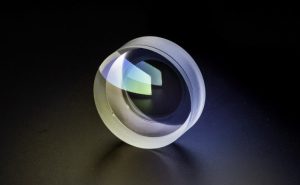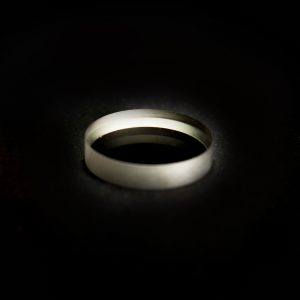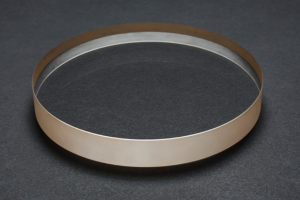After purchasing optical components, effective maintenance can maintain their quality and extend their service life, mainly reflected in the following aspects:
1、 Save
Do not place optical components on a hard surface, as it may abrade the optical surface. Most optical components should be wrapped in lens paper and placed in a specific storage box. The storage box should be stored in a low humidity, high cleanliness, and temperature controlled environment to avoid lenses
Scratches and film contamination;
2、 Product cleaning
During the use of lenses, it is easy to come into contact with pollutants such as dust, gas, or grease. Taking an actual example, during laser processing, when laser cutting, welding, or heat treatment is performed on materials, a lot of gases and splashes will be released from the surface of the material. These substances cannot affect the optical path, and can cause damage to the lens. The optical lenses in the laser optical path system should also be considered expendable products, but as long as we use them correctly and perform maintenance work in daily operations, we can maximize the service life of the lenses by 1, frying and replacing the lenses, thereby reducing the cost of use.
1. Inspection
Before cleaning, inspect the optical components to determine the type and extent of contamination. The inspection step cannot be ignored because it is often necessary to use a solution to clean the optical components, and it can come into direct contact with the components. If the operation is performed too frequently, it can also damage the optical surface. If there are multiple contaminants on the optical element, it is necessary to pay great attention to the cleaning procedure, as when cleaning one impurity, another impurity may damage the optical surface. For example, if an optical element is contaminated with oil and dust at the same time, if you wipe the oil first, the dust will rub against the surface and cause scratches.
2. Cleaning
Blowing optical surfaces usually requires blowing away dust and other loose contaminants before performing any other cleaning process. This method requires the use of inert dust removal gas tanks or blast balls. Do not blow directly against the surface of the component with your mouth, as saliva may splash and deposit on the mirror surface. If using inert dust removal gas, please place the gas tank upright before and during the entire process of use. Do not shake the gas tank before or during use. And align the nozzle far away from the element before blowing. These steps help prevent the deposition of inert gas propellants on the surface. If you are using filling gas, place the gas tank approximately 6 inches away from the component and use a short blow. Rotate the nozzle of the inert gas tank to form a grazing angle with the surface of the optical element for blowing.
Clean with a fiber wiping cloth
The fiber wiping cloth is made of soft and pure cotton, which can well lock in the solvent and will not volatilize as quickly as cotton swabs, nor will it quickly separate from other wipes. These wipes leave some lint on the outer edges, so always use a folded edge when cleaning. For smaller optical components, first divide the wiping paper into three parts, each about 2.6 * 4 inches. Select the appropriate folding length to fold it into 1.3 * 4 inches. Then fold about 1 inch at the end, moisten the folded edge with solvent, and use the edge to wipe or clean the optical surface; Using a pump bottle to dispense solvent facilitates holding the optical element with one hand and moistening the wiping paper with the other hand. During the cleaning process, please wear gloves or fingertips, pick up the optical element with one hand, and then gently, continuously, and slowly wipe the optical surface with a fiber wiping paper to prevent stripes. To avoid creating streaks, you may need to adjust the amount of solvent, the force applied during wiping, and the speed of wiping.
3、 Cleaning tools
1. Gloves: Gloves are very important when handling optical components that are not installed. Generally, gloves for operating optical components are either lint free cotton or powder free latex gloves.
2. Tweezers: Optical tweezers and vacuum tweezers are often used to handle smaller optical components. Optical tweezers are designed to grip small, hard objects without slipping and increasing the tactile sensation. In addition, optical tweezers are specially designed and made from a material (such as carbon resin) that reduces the risk of scratching optical components. Vacuum tweezers use suction cups to clamp optical components.
3. Fiber wiping cloth: Made of pure cotton, these wiping cloths can be used to clean the surface of optical components or any other components. Although the edges may shed lint particles, this can be avoided if you fold them and clean the optical elements with the folded edges. This wiping cloth can also be used as a soft surface for placing optical elements.
4. Optical storage box: usually filled with foam or molded plastic. These fillers ensure that the optical elements do not move within the box and that the optical surface does not contact a hard surface. Before storing in an optical storage box, most optical components should be packaged with lens paper. For smaller optical components, folding lens paper to wrap the optical component is easier than wrapping it.
5. Amplifiers: Microscopes and small magnifying glasses can carefully examine smaller optical components. They are important for determining the cleanliness and integrity of optical surfaces, helping to select the appropriate cleaning procedure. In addition, if damage is found under a magnifying glass, the optical element should be replaced.
6. Inert dust removal gas: Compressed inert dust removal gas can provide a continuous high pressure gas flow that can blow contaminants away from the optical surface. However, due to the release of gas from the pressurized tank, it is usually lower than the ambient temperature, resulting in a decrease in the surface temperature of the optical element. In addition, the compressed gas stream may contain gas tank propellant that can deposit on the surface of the optical element. The blast ball avoids temperature and propellant issues, but the air blown onto the optical surface may contain contaminants. For optical components whose surfaces cannot be contacted, blowing and wiping are available cleaning methods.
7. Optical cleaning agents: distilled water, ethanol, alcohol, etc. Typically, a mixture of ethanol and alcohol (1:1) is used for wiping.
4、 Preventive measures
1. Do not install lenses with bare fingers, but wear finger covers or rubber gloves;
2. Do not use suction equipment to avoid scratching the surface;
3. When taking the lens, do not touch the film layer and lens, but hold the rough surface of the lens edge;
4. The operator should avoid talking into the lens and try to keep pollutants away from the working environment as much as possible;
5. Sour vinegar only dissolves dirt and does not cause damage to the lens.




